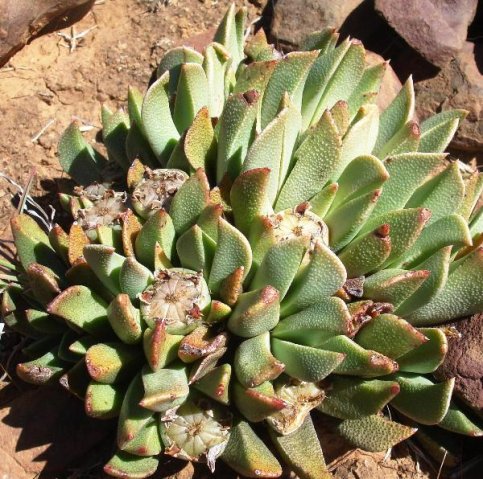Rabiea albinota

Author: Ivan Lätti
Photographer: Judd Kirkel Welwitch
Rabiea albinota, commonly known as the clock plant, sometimes as the clock pockfig and locally from the Griqua indigenous language of the region as s'keng-keng, is a compact dwarf succulent, growing aloe-like leaf rosettes from fleshy roots. Scientifically the plant used to be known as Nananthus albinotus and Aloinopsis albinotus respectively at different times, among other names.
The short-stalked flowers are bright yellow, typical of the vygie or mesemb family. The petals occur in about three whorls and the flower diameter is about 4 cm.
The species distribution is in the northwest of the Eastern Cape, the south of the Free State, and the west of Lesotho.
The habitat is karoid scrub in harsh climatic conditions characterised by temperature extremes and low rainfall. The habitat population is deemed of least concern early in the twenty first century.
Given its natural adaptation the plant requires dry winters and withstands cold but responds well to cultivation. Some parts of this plant are said to have been added to tobacco for inducing hallucinogenic effects (Smith, et al, 2017; Smith, et al, 1998; iNaturalist; www.drugs-forum.com; https://pza.sanbi.org; http://redlist.sanbi.org).

